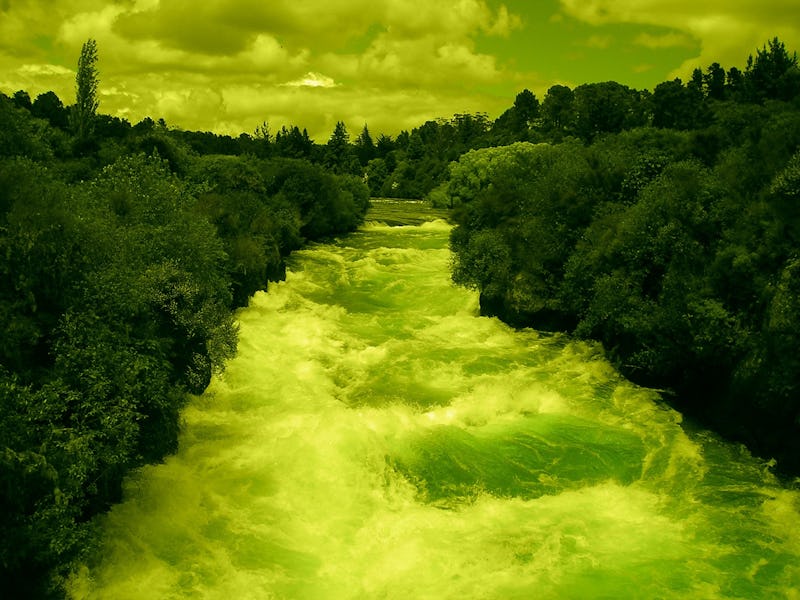
Carla Davidson did not expect to start her week figuring out how to suck 7,200 gallons of foaming Mountain Dew from a sewer. But when the senior water quality analyst for Michigan’s Department of Environmental Quality got the call from Pepsi’s plant in Howell notifying her of a spill that the company had been trying to clean up for two days, she knew she had to act fast: The “high-strength waste,” she tells Inverse, was no sweet treat.
“Just because I can drink a pop without being harmed doesn’t mean that fish could live in it,” she says. “It’s not okay for them to live in 56,000 gallons of high-strength wastewater. It’s not going to be a funny thing. It’s gonna be a fish kill.”
The spill had happened at the local Pepsi plant in March the Friday before she got the call: A syrup tank in the plant had burst, sending all its sugary contents into the plant’s sewage system. There, it churned with the wastewater to create 56,000 gallons — that’s about 142 hot tubs’ worth — of high-strength sewage. Pepsi’s first instinct was to discharge the wastewater to its plant’s biological pretreatment system, which uses bacteria to break down sugary, high-strength waste before it’s released into the public sewage system. The problem is, there was just too much of it to deal with.
Nearly 56,000 gallons worth of Mountain Dew-tainted wastewater contributed to the "huge foaming event."
“Even that system could not deal with it, and it foamed over. The bacteria were not able to handle it,” Davidson says, explaining that Pepsi should have immediately isolated the spill. By the time she got to the site, Pepsi had cleaned up most of the foam, but she noticed an “orange-ish” residue left over (it’s not clear which flavor of Dew had spilled, but all signs point to Live Wire or the caffeine-laced KickStart). These were the traces of what the Department of Environmental Quality called a “huge foaming event,” — it had spread onto the ground and the neighboring property. Had it spilled out of the onsite stormwater detention basin it was immediately sequestered in — a wise move on Pepsi’s part — it would have had incredibly toxic effects.
The Pepsi bottling plant in Howell, Michigan is about 2 miles from nearby Thompson Lake.
This isn’t to say that Mountain Dew is toxic, but the sugary syrup that goes into it — or any Pepsi drink — is certainly not non-toxic for the environment, Davidson explains. “If it had reached the stream, which isn’t used to that kind of high-strength waste, it would deplete the oxygen in the stream and then all the aquatic life in the stream would not have any oxygen,” she says.
She’s referring to the issue of increased “biochemical oxygen demand”, a problem that sugar manufacturers with poor environmental standards have faced before: Fish, plants, aquatic animals, and bacteria rely on dissolved oxygen in the water to breathe, but there’s only a finite amount bubbling around in rivers and lakes. Under healthy conditions, wildlife and oxygen levels exist in a delicate balance, but when the microorganisms in the water suddenly start to grow — say, when there’s an unexpected influx of Dew-flavored syrup — they start to suck up much more oxygen than usual.
“There’s going to be no oxygen, so it would cause, potentially, a fish kill,” Davidson says.
Thompson Lake narrowly escaped a Mountain Dew-induced fish kill.
Fortunately, the issue was resolved by Pepsi before it could really do the Dew on nearby Thompson Lake and its associated streams. Davidson says that the company, which is currently under fire for other public faux-pas, did a good job cleaning up the foam, isolating the excess in a makeshift dam, and scraping the ground for traces of orange residue, and she’s working with the company to make sure their future Dew ends up in the mouths of people, not fish.
“There are people who live along the river,” Davidson says. “One guy called me and said it was ‘the most beautiful place in the world.’ It would be very upsetting to the people who live there to see a fish kill.”